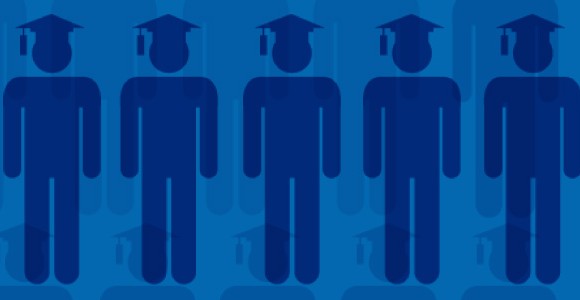Business
The Business of High School Dropouts

Syracuse, NY – Amanda Quick
The high school dropout rate in America is on the rise, sounding alarm bells from school hallways to the corridors of Congress.
Since 2009, the national high school graduation rate in the U.S. has risen to over 75%. While the graduation rate has improved, dropout rates of 7,000 students each day cannot be ignored.
West Virginia’s State Journal reported that 1 in 4 high school students fail to graduate in four years. Additionally, the graduation rate is the worst for minority groups who only graduate about 60 % of their students.
According to the America’s Promise Alliance website, “Dropping out makes it harder for these young people to succeed in life, our economy loses hundreds of billions of dollars in productivity and our communities suffer enormous social costs.”
How are Education and the Economy Connected?
Additionally, the Alliance For Excellent Education has discovered that addressing the high school dropout crisis is a key strategy for determining economic growth. Tucci said there are four links, which connect education and the economy:
- The economic benefit to individuals by improving their own educational attainment;
- The economic costs of low education attainment rates, primarily through increased public expenditures such as Medicaid or welfare for those with lower education levels;
- The role of education in ensuring the nation can fulfill future workforce demands and remain globally competitive
- The positive link between improved education and the nation’s economic growth.
How Much Money are We Actually Spending?
Currently, school districts pay an average of $10,000 or more per high school student. While taxpayers may not be aware of how much money they are spending, the cost of high school dropouts affect everyone.
Tucci said 70% of Americans are not connected to the school system (they don’t have kids in school, their children attend private school etc.). Therefore, many of these people feel that dropout rates do not affect them.
Is the Dropout Rate an Issue in African American Communities?
For black students in the U.S. the graduation rate is between 50 and 60 %.
Tucci said the high school dropout rates in minority communities are a multifaceted problem because the students attend low performing high schools.
“These students who happen to be of color or low income are attending schools that are dysfunctional and have been for years,” Tucci said.
Some minorities attend “dropout factories” which are usually in low-income areas, have few qualified teachers and poor resources. This type of environment puts minorities at a disadvantage and widens the gap between them and their counterparts.
Where and Why Do Students Dropout?
Tucci said many students dropout in 9th grade or never enter high school because of the difficult transition from middle school to high school.
“The bar is raised,” Tucci said. “Students have no foundation and they find the structure challenging.”
Other dropout factors include parental earnings, lifestyle and students feeling disconnected in schools. Additionally, the highest dropout rates are seen in urban areas and the southeast or southwest regions.
How are Schools Going to Solve the Problem?
Tucci said numerous schools have special programs to hinder the high school dropout rate and keep students in school.
For example, one of the goals in California is to keep students engaged. They mix workforce readiness with strong academics.
“It’s all in the frame of the career path. They study Geometry from the eyes of a forensic scientist. It gives them a taste of what the future can hold.”
In 2009, the Alliance reported that California, Tennessee and Florida led then nation in having the highest number of additional graduates while California, Nevada and Connecticut lagged behind.
What are the Economic Benefits if Graduation Rate Continue to Improve?
In an effort to expand the national graduation rates, Collin Powell, the Founding Chair of the America’s Promise Alliance, is a partnering organization involved in the launch of the campaign to build a grad nation under the “Civic Marshall Plan”. President Obama and U.S. Secretary of Education Arne Duncan has endorsed the campaign calling for 90 percent of U.S. students to graduate from high school and complete at least one year of post-secondary education or training by 2020. The Alliance said there were numerous benefits to meeting the 90% graduation goal:
- There would have been an additional 580,000 graduates and 37,000 new jobs
- These additional graduates would have driven significant growth to local, state, and national economies due to the $5 .3 billion in additional income that they would have been expected to earn with a high school diploma as compared to their earnings as dropouts.
- This class would have been predicted to spend an extra 19 billion on home sales and $669 billion on vehicles.
- State governments would generate an additional $1.8 billion in tax revenue due to increased economic activity.
Why a High School diploma?
Tucci said most jobs now require a college degree. Therefore, high school is a pipeline to college and the two institutions can’t be examined separately.
Mark Schneider, the Vice President at American Institute of Research said the college graduation rate is 55%. Similar to high school rates, the graduation rate for blacks and Hispanics is substantially worse and usually falls between 30-35%.

-

 Black History4 months ago
Black History4 months agoThe untold story of a Black woman who founded an Alabama hospital during Jim Crow
-

 Featured8 months ago
Featured8 months ago‘No Closure’ In Town Where Five Black Residents Were Either Murdered, Died Suspiciously Or Are Missing
-

 Black History9 months ago
Black History9 months agoBlack History Lost and Found: New Research Pieces Together the Life of Prominent Texas Surgeon and Activist
-

 Featured8 months ago
Featured8 months agoFounder of “The Folding Chair” Podcast Calls Montgomery’s Brawl ‘Karma’
-

 Featured8 months ago
Featured8 months agoThousands ‘Live Their Dream’ During National Black Business Month
-

 Featured10 months ago
Featured10 months agoJuneteenth And ‘246 Years Of Free Labor’ Are Key To Conversations About Reparations

